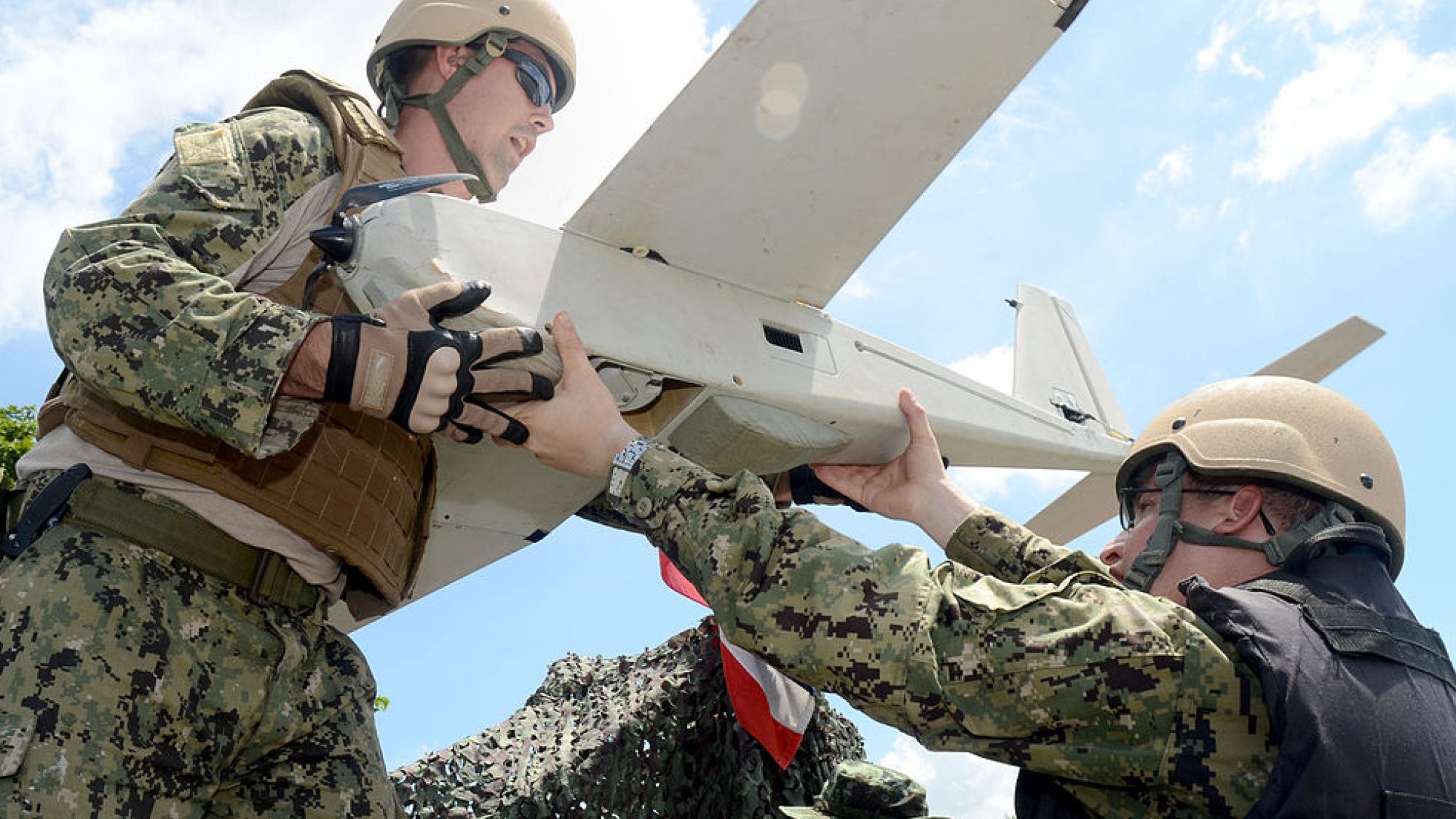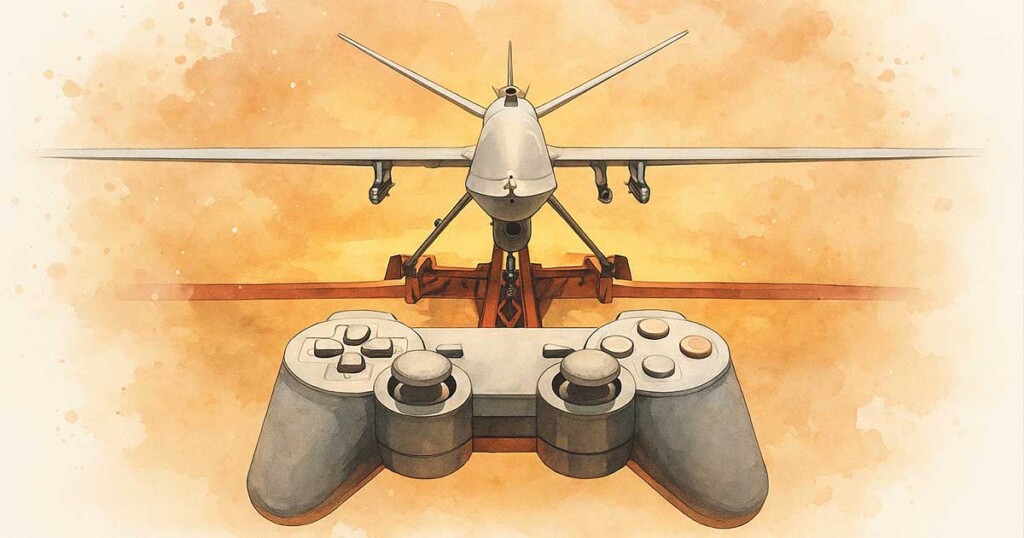The Balkan Peninsula is not the most peaceful region in the world. In fact, to be honest and direct, the entire European continent can currently be considered unstable—early signs of a potential future war are already clearly visible. This does not necessarily mean that war will indeed break out, but we can say with certainty that many European countries are preparing precisely for that scenario: war.
The key question is—how will that war be fought, and with what? At this moment, we have a vivid example in Russia’s invasion of Ukraine, which has turned into a prolonged and bloody war of attrition. To ignore this experience or dismiss it as irrelevant or inapplicable would be a grave mistake—the course of the war in Ukraine is being shaped by very logical and objective factors, driven by economic, industrial, technical, and even societal incentives.
This experience is relevant for anyone who might be drawn into war in the coming decades—because future wars will most likely be fought according to the same patterns that currently define the Russo-Ukrainian conflict.
THE NEW FACE OF THE ART OF WAR
One of the most striking features of the conflict between Moscow and Kyiv is the so-called “drone war.” Modern scientific and technological advancements have enabled the use of high-precision aerial munitions on a scale previously unimaginable. Combined with the widespread deployment of landmines, the development of aerial reconnaissance using drones, tactical missile systems, and guided artillery shells, the “drone war” has shaped an entirely new face of military art. The events now unfolding on the battlefields of Ukraine and Russia represent a new wartime reality—a model that must be studied and analyzed.
We have grown accustomed to calling them “drones” and “unmanned aerial vehicles,” without delving too deeply into their operational concepts or technical characteristics—and it must be noted that the modern world still lacks an official definition, or even an adequate classification, of this type of military equipment. Armed forces have yet to fully grasp the specific nature of their use or the reason behind their immense popularity—this understanding will likely come years (or perhaps even decades) after the end of the Russo-Ukrainian conflict.
The answer to the question of what triggered the birth of the era of remotely controlled weaponry is both simple and, at the same time, a complex challenge.
THE COLLAPSE OF THE MILITARY INDUSTRY
The end of the Cold War also marked the end of traditional military art, which had been refined through a series of major conflicts during the 20th century—and this was truly a global event. The era of military preparedness and mobilization, investment in cutting-edge weapons technologies, and the development of military industry came to a close. A new reality emerged: low-intensity wars against irregular opponents, where armies no longer needed the capabilities they once had during the era of global missile and nuclear rivalry.
However, this decline did not mean that future large-scale conflicts would disappear—and such conflicts primarily require vast amounts of equipment and weaponry that must be easily replaceable, quickly producible, and cost-effective. In the 21st century, these conditions were met by remotely controlled and unmanned platforms.
The year 1991 holds an almost sacred place in the history of global warfare—above all, in political and socio-economic terms. Both laypeople and experts often overlook the question of what was happening in other parts of the world at that moment, and how the collapse of the USSR affected them.
This narrow perception of history seriously undermines our ability to understand current events—because, truth be told, the fall of the Soviet Union also marked the beginning of an era of military degradation, triggered by a sharp decline in global interest in waging large-scale wars.
Military budgets, research efforts, industrial capacities, equipment reserves, mobilization potential, and the size of armies were all actively reduced—no one was spared, including the United States.
A DRASTIC DECLINE IN SHELL PRODUCTION
The result was predictable: armed forces around the world lost the ability to effectively wage large-scale wars, primarily because they lost the capacity to produce massive amounts of “consumable goods” necessary for sustained combat operations.
An illustrative example is a 1994 Pentagon report on artillery ammunition stockpile issues:
“The five production lines that must remain active (Iowa, Lone Star, Milan, Crane, and Pine Bluff) have a combined capacity to load, assemble, and pack 867,000 artillery shells per month, working three eight-hour shifts a day, five days a week. According to military officials, this capacity is sufficient to meet projected resupply needs for all artillery ammunition.”
In other words, in 1994, the United States could produce nearly one million large-caliber shells per month. By 2024, that number had dropped to fewer than 400,000 shells per year. Thus, we arrive at the current situation in a consistent and logical way—one of the key and most global lessons of the Russo-Ukrainian conflict is precisely the dramatic collapse of industrial support for armed forces.
This type of difficulty has laid bare the catastrophic inability of modern defense-industrial complexes to organize sustainable supply chains for wartime armies—not just in Russia and Ukraine, but also across Europe and the United States.

INTERNET SUPPLY CHAINS
The mass production of traditional weapons systems no longer matches the scale or requirements of modern warfare—while the rate of equipment losses is entirely comparable to those of the major industrialized wars of the 20th century. Military equipment is lost in the thousands annually, while production—at best—is measured in the hundreds.
A range of objective factors also hinders the expansion of traditional industrial capacities. Besides requiring major financial investment and time, building new military factories primarily demands a qualified workforce—these are complex manufacturing processes where untrained labor cannot be used.
In addition, the weakness of traditional design bureaus, entrenched thinking, and the absence of proper analytical infrastructure hamper the development of new weapons systems tailored to modern conditions. In essence, the current way military equipment is developed and manufactured is completely incompatible with the challenges of our time.
But there is another side to the picture, visible in the modern high-tech commercial sector.
Forty-five years ago, remotely operated platforms were available only within a narrow segment of the defense services market—whereas today, anyone with internet access can purchase them through online stores. The same goes for software, computing power, communications technology, industrial 3D printing, and many other tools that once belonged exclusively to major corporations or military-intelligence structures.
A SHORT COURSE IN DRONE ASSEMBLY
On the other hand, building a drone requires only widely available software such as CAD programs, access to 3D printing, and commonly used hardware components like Raspberry Pi computers or Arduino microcontrollers—in short, parts and tools that can be legally obtained anywhere in the world via the internet and online store deliveries.
For example, in today’s world, it is much easier to assemble remote-controlled munitions based on a racing FPV drone than it is to build a mortar—because making a mortar requires heavy metallurgy, special types of steel (and therefore knowledge of material science), along with a range of technologies and skills necessary to construct such a structurally simple weapon.
If we take a closer look at FPV drones (“first-person view” drones), which are currently among the most widely used types of infantry weaponry, we will find that their design is fundamentally very simple. They require minimal engineering knowledge, a very small amount of startup capital, cheap components, and only basic workforce training (in general, even a teenager could assemble an FPV drone after a short course and with a quality manual).
THE KEY IS IN THE CIVILIAN SECTOR
The research and development cycle for this kind of weapon is exceptionally short compared to traditional arms—it can be modified and improved in just a few weeks, whereas the development of artillery weapons can take years.
The adaptability of small-scale production and the ease with which designs can be altered radically changes traditional concepts of military manufacturing. Different batches of drones can be tailored even to different battlefields, depending on terrain conditions (such as electronic warfare activity, most common jamming frequencies, flight range, etc.).
This brings us to a very interesting situation. For example, during World War I, 80% of American military production came from civilian industrial enterprises. By 1941, that share had dropped to 50%, and by 1963—to just 10%. Today’s situation is strikingly similar to that of World War I—the task of supplying warring armies has once again fallen almost entirely to civilian industrial enterprises. These companies either deliver non-military products used for military purposes (such as civilian vehicles), or they produce military-use equipment from non-military components (like drones assembled entirely from civilian parts).
FROM FACTORIES TO SMALL WORKSHOPS
But can drones, for all their advantages, fully replace traditional weaponry? Of course not. FPV drones cannot match the firepower of conventional artillery, for example. In terms of efficiency, cost-effectiveness, and firepower, the howitzer shell still has no real competition. However, the current situation is such that it is simply impossible to produce either shells or artillery systems in sufficient quantities—while semi-manually built flying bombs can be assembled in small workshops by unskilled labor.
The “drone war” was not so much a consequence of scientific and technological progress, as it was a product of the regression and collapse of 21st-century industry. Yet, large-scale combat operations still require simple, mass-produced, cheap, and effective weapons. The solution to the shortage of military resources was found in unmanned and remotely operated platforms.

IN THE HANDS OF REBEL GROUPS
There is a widespread belief that various types of commercial remote-controlled platforms only entered modern warfare as a novelty during the Russo-Ukrainian conflict. However, this perception is a serious misconception, mostly due to a previous lack of broader interest in the topic. In reality, unmanned aerial vehicles (UAVs) from the civilian sector had already been widely used by insurgent and terrorist groups in the Middle East and Afghanistan.
For example, the Taliban had centrally introduced tactical aerial reconnaissance into their units, where DJI Phantom quadcopters served as the main tool. Moreover, these drones were also converted into improvised “bombers,” whose use was closely tied to mobile motorcycle groups. During attacks on government checkpoints or ISAF positions, the Taliban would force Afghan police or soldiers to retreat into cover, then launch lightning-fast motorcycle assaults during moments of their temporary paralysis.
Similar tactics were common in Syria and Iraq, but they went largely unnoticed—regular armies lacked the motivation to adopt such technologies, while rebel groups had too limited engineering and industrial capacities to make widespread use of more complex weapons built from commercial components.
THE METHOD OF THE UKRAINIAN MILITARY APPARATUS
In Ukraine, the situation evolved differently, as circumstances forced the armed forces to adopt military tools similar to those used by insurgents in the Middle East. At the onset of hostilities in 2014–2015, the Ukrainian Armed Forces functioned in many respects like irregular units—lacking sufficient equipment and heavy weaponry. Consequently, they were compelled to improvise—one solution being the use of civilian drones and the creation of various home-assembled platforms.
This practice was further reinforced during the period of the Minsk Agreements. The use of heavy weaponry was politically restricted, so both sides actively resorted to using smaller-caliber infantry munitions such as VOG grenades. These grenades were used in their original purpose—fired from under-barrel launchers—but also repurposed as “aerial bombs,” dropped from various types of commercial drones modified for bombing.
Over several years, these methods became standard across all branches of the Ukrainian military apparatus (including the Army, Border Guard, National Guard, and others). This led to the development of established tactics for aerial reconnaissance, drone bombardment, and even the creation of multiple specialized combat drones.
By the time full-scale war broke out in 2022, Ukraine already had a well-developed and battle-tested practice of using commercial drones—something that deeply influenced their continued evolution in modern warfare.
Even the first wave of Ukrainian mobilization faced shortages of basic weaponry, such as light machine guns (a problem that still exists today). Given the overwhelming superiority of the Russian army—supplied with abundant artillery and ammunition reserves from the Soviet era—Ukrainian forces on many fronts had no choice but to fight a gradual withdrawal from one defensive line to the next.
Naturally, such a situation required at least palliative solutions—and one of them became quadcopters equipped with munition drop systems. These allowed Ukrainian infantry units (particularly mobilized rather than regular troops) to carry out at least some form of offensive action against advancing Russian forces.
A JOYSTICK INSTEAD OF BALLISTICS
Over time, the same “weapon” began to be used by the Armed Forces of the Russian Federation—as ammunition shortages and a lack of trained crews became more pronounced, early signs of positional warfare began to emerge.
In that context, the key advantages of drones in modern warfare became evident. First and foremost, operating them does not require high formal military qualifications. While effective use of these systems at the tactical level still requires a certain degree of knowledge and skill, the overall entry barrier is far lower than for traditional systems—such as operating a 60mm mortar. Even specialized FPV models intended for military use require relatively short training periods compared to conventional weapons.
Another important factor stems from the characteristics of modern society: to be direct—today, out of 100 men, far more are comfortable handling a gaming joystick than a wrench or basic ballistic computations. As a result, it is possible to train a much larger number of operators for remote-controlled weapons (and much more easily, since these individuals already possess basic motor and digital skills—they just need specialized direction). This drastically differs from the far more demanding process of training artillery crews or tank operators.
DAMAGE WITHOUT DIRECT CONTACT
At the same time, FPV drones are essentially expendable—they require no complex maintenance, no dedicated combat units, nor bulky infrastructure for deployment. This means that the currently low level of technical skills and expertise in the general population has minimal negative impact on the ability to conduct combat operations.
This is an extremely important issue, directly tied to the widespread use of unmanned platforms. Since the end of the Cold War, armed forces have not only suffered losses in reserves and the ability to replenish military equipment—demographic shifts and new economic realities have effectively destroyed traditional sources of high-quality recruits. The average age of soldiers has been steadily rising, while their physical and technical capabilities have been declining.
Today, the average mobilized soldier is between 36 and 45 years old, often struggles to integrate into larger units, and is poorly suited for hard physical labor or operating complex equipment.
This problem has directly influenced the nature of warfare. When a large portion of soldiers is not physically prepared for high-intensity combat, battles become less dynamic and tend to shift into positional conflicts. In such a scenario, weapons that allow damage to be inflicted on the enemy from long distances without direct contact become increasingly valuable.
Under ideal industrial conditions, such warfare would favor mortars, tube artillery, and rocket artillery. However, the defense industry’s inability to ramp up production—or even to replace losses—has made reliance on traditional systems impossible.
A €600 DRONE—A REPLACEMENT FOR HOWITZERS WITH GUIDED SHELLS
Given the challenges in training personnel and the generally low quality of mobilized units, combined with the need to engage in combat at greater distances (or, conversely, in extremely close encounters—which is also a consequence of these factors, but requires separate analysis), remote-controlled weapons naturally proliferated, driven by their high effectiveness under combat conditions.
For the first time in decades, armies gained the capability to systematically and precisely strike enemy forces in fortified positions. Classic trenches, machine gun nests, bunkers, and “foxholes” offer solid protection against artillery and mortar fire—but they are vulnerable to precise, maneuverable munitions capable of targeting infantry within their very shelters.
In addition, drones allow for long-range attacks on moving vehicles—in situations where, previously, a modern howitzer with guided munitions and a well-trained crew would have been required, now a simple $600 drone, operated by a pilot trained in a two-month course, is sufficient.
To be continued.





